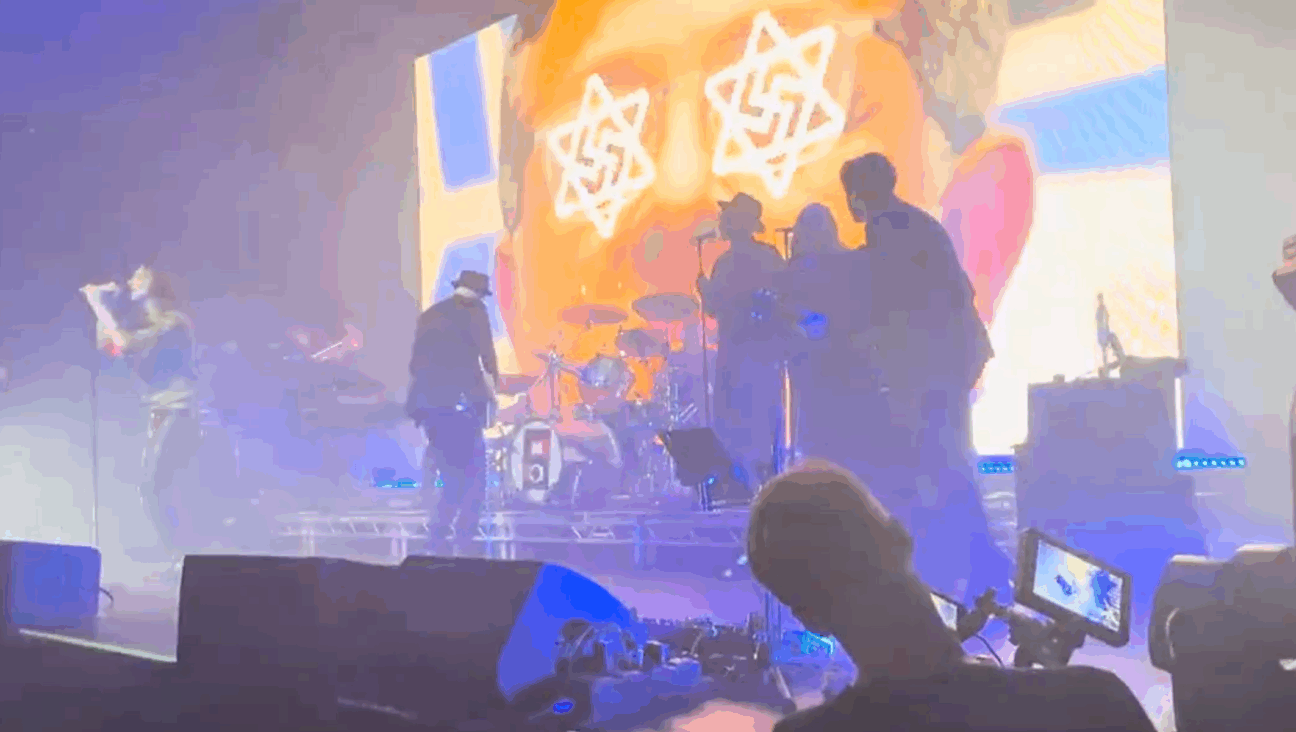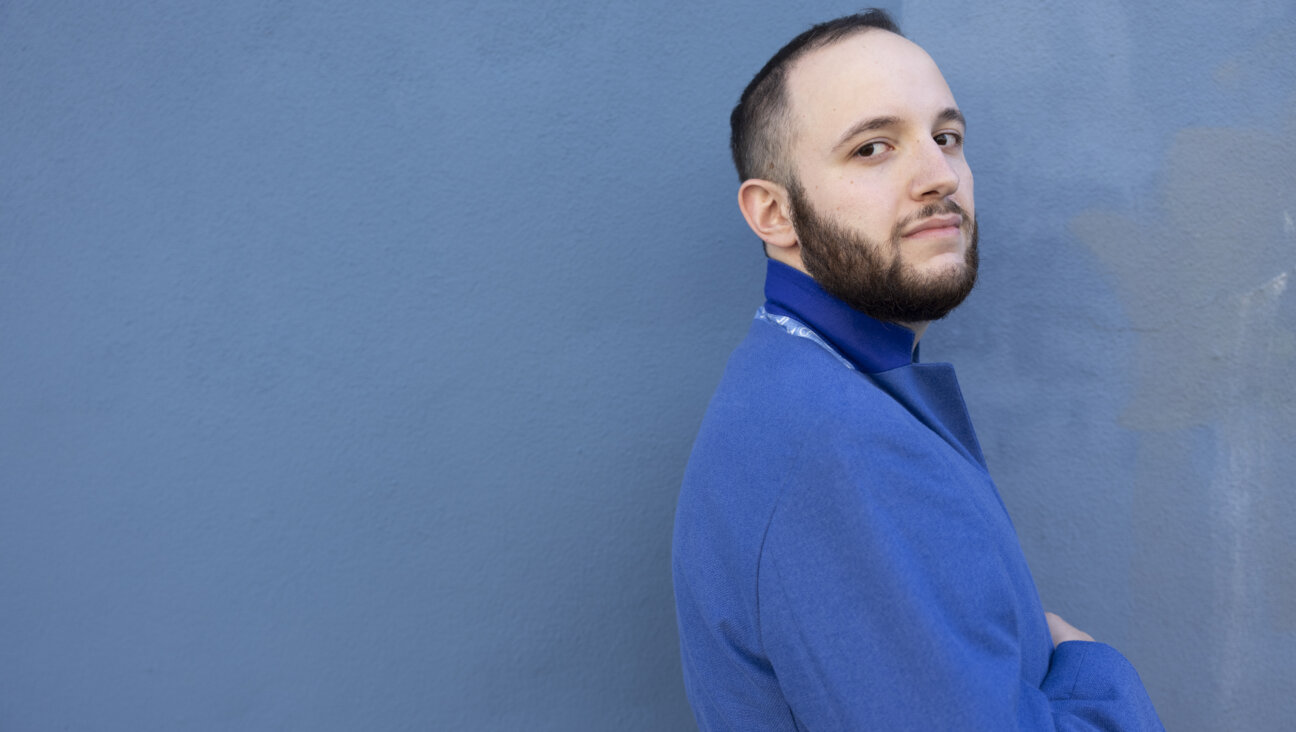After Riots, Jews Stayed in Crown Heights

Graphic by Angelie Zaslavsky
On the morning of July 22, 1966, The New York Times pushed aside its coverage of the Vietnam War and the Gemini 10 space flight mission to devote its lead story to a riot that had struck the Brooklyn neighborhood of East New York the previous night. Next to the article appeared a photo of a garbage can crashing through a butcher shop’s window. On the remaining shards of glass were the Hebrew letters for the word “kosher.”
Overtly, the riot had had nothing to do with the thousands of Jews who for decades had been living in East New York and adjacent Brownsville. A group of Italian Americans, styling themselves the “Society for the Prevention of Niggers Getting Everything,” — that is, SPONGE — had held a protest march. It was met by 25 blacks lobbing bottles. As the violence spread, an 11-year-old black child was killed, further heightening the rage.
By the time the year 1966 ended, the Jews of East New York had almost entirely fled. Some, it was true, had been vacating the neighborhood’s tenements in favor of suburban homes since the late 1950s. But even the newer parts of the area, where some had just built a handsome brick synagogue, emptied out. That synagogue was just one of many to abruptly turn into a black church.
The saga of East New York is the saga of urban Jews in America. We are the white folks who leave first when the color starts to change. You can ascribe all kinds of mitigating reasons to our tendency, of course. A diasporic history has taught us to decamp ahead of danger. A mere 49 deaths in the Kishinev pogrom, after all, sent hundreds of thousands of Jews streaming to America, and numerous others into the Zionist movement and the Bolshevik Revolution. Our collective understanding of the Shoah includes a kind of judgmental incomprehension of all those Jews, from Berlin boulevardiers to shtetl tzaddikim, who ignored the warning signs and waited complacently for their killers.
In the American idiom, our mobility was both outward and upward. We moved because we aspired to suburbia, with its excellent schools and affluent aura. We moved because, as renters more than as owners in the cities, we could do it more easily than Italians, Irish and Poles bound to their modest homes that represented their life’s savings. We did it because, assuring ourselves that we were impeccably liberal on civil rights, we refused to admit that we were running away not only from increasing crime and deteriorating city services, but also from blacks.
It rarely occurred to me until about the late 1980s, as I was researching a book about one of those black churches that inhabited a former synagogue in East New York, what white flight/Jewish flight looked like to the black folks left behind. “Just tell me one thing,” I heard more than a few congregants ask me, less in reproach than in bafflement. “Why did all the Jews go?”
Against this history, the most profound meaning of the 20th anniversary of the August 1991 Crown Heights riot to me is that the Jews there didn’t run. Here was a modern-day pogrom — not sanctioned by government, but surely abetted by the inadequate response of the police, who in an unfortunate coincidence were under the command of a black mayor and a black commissioner — that left religious scholar Yankel Rosenbaum dead and the air filled with anti-Semitic rhetoric.
Yet the Jews of Crown Heights, the Lubavitcher Hasidim, did not run. In fact, while the census cannot ask for religious affiliation, the signs point to the Jewish population having increased. A survey of the neighborhood by the Department of City Planning found that the number of whites in Crown Heights more than doubled — to 20,458 from 9,964— from 1990 to 2010. Though some of those whites are undoubtedly gentrifying yuppies and hipsters, many must be Hasids. The Chabad movement estimates that it had between 1,500 and 1,800 families in the neighborhood 20 years ago and 2,600 to 3,000 now.
Staying put and digging in, it must be said, is not necessarily the result of transcendent, universal values. The whites in Chicago and Cicero who threw bricks at Martin Luther King, most of them ethnic Catholics, rationalized their racism with paeans to their neighborhoods. The settlement enterprise in Israel justifies itself by invoking a divine right to Jewish dominion in the West Bank.
In the example of Crown Heights, though, the Lubavitchers have demonstrated both a principled refusal to be driven out and a sensible re-evaluation of their clannishness. A fabric of relationships has developed between them and their African-American and Afro-Caribbean neighbors since 1991. It is based not on pieties of brotherhood but on the pragmatic, mutual self-interest in not having Crown Heights torn apart again. For all their 17th-century trappings in attire and their stringent interpretation of Judaism, the Chabadniks have walked the diversity walk.
As Barnard College sociologist Jonathan Rieder , one of the most trenchant analysts of the 1991 riot and, more broadly, of black-Jewish relations, recently put it:
“However ordinary Jews were responding to ‘change’ or ‘threat,’ the Lubavitchers of Crown Heights were voting with their feet that they were capable of living in multicultural neighborhoods a good deal more than their less Talmudically inclined brethren racing to Scarsdale or Great Neck. And in another odd and possibly ironic convergence, the cosmopolitan tribe of Reform or liberal Jews trying to preserve mixed neighborhoods, albeit often suburban ones, share a certain multicultural tolerance with their Hasidic landsmen.”
Samuel G. Freedman, a professor of journalism at Columbia University, is the author of several books, including “Upon This Rock: The Miracles of a Black Church” (Harper Perennial, 1994) and “Jew vs. Jew: The Struggle for the Soul of American Jewry”(Simon & Schuster, 2000).















